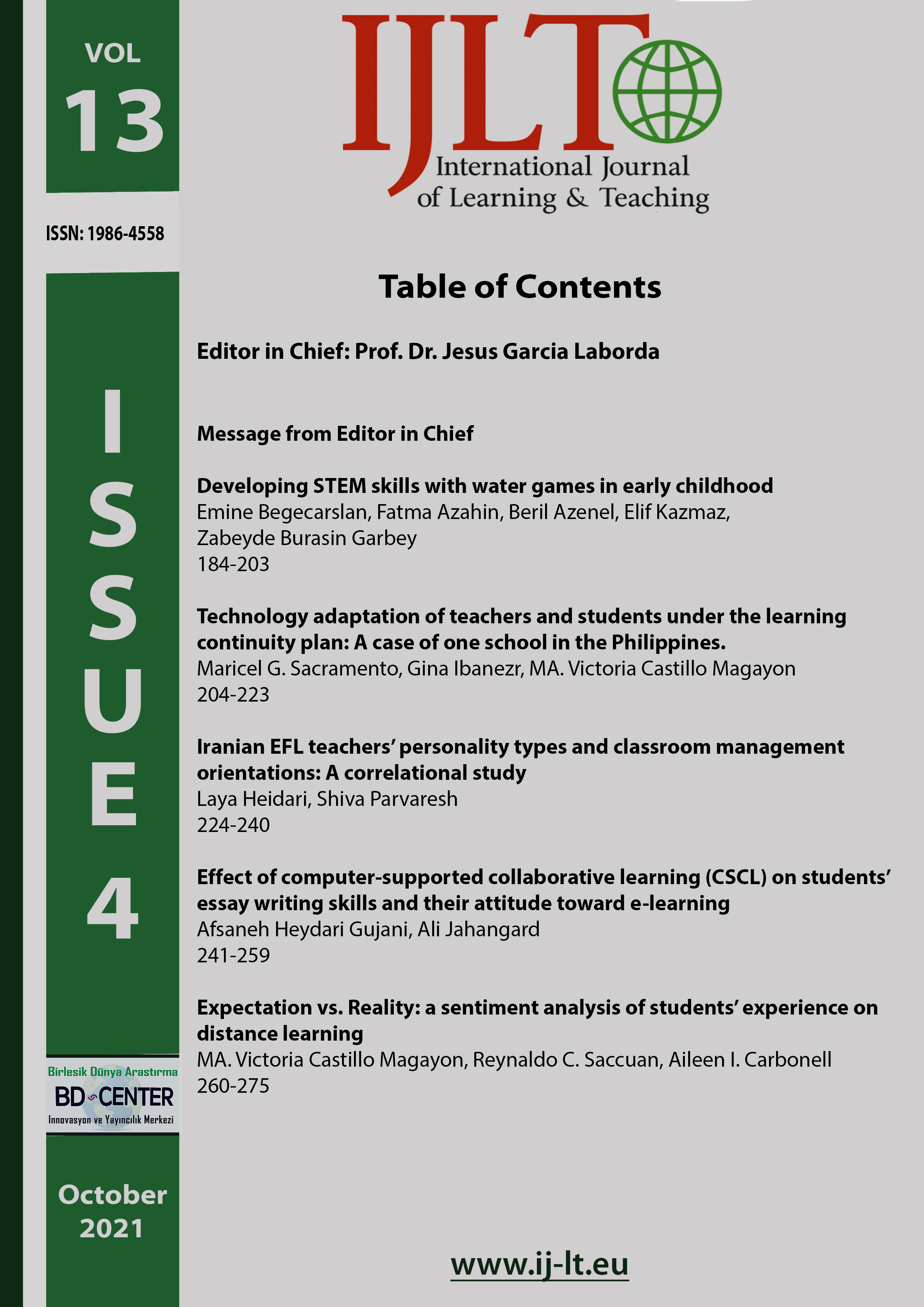Technology adaptation of teachers and students under the learning continuity plan: A case of one school in the Philippines.
Main Article Content
Abstract
The COVID-19 pandemic has prompted educational leaders to restructure the curriculum and modify the instructional set-up to accommodate remote learning of which using technology is the most viable solution to the existing problem. This study explores how teachers adapt and utilise technology-based teaching, and what makes students learn under blended learning modalities in Taytay Senior High School. Quantitatively, using the validated survey questionnaire anchored on the technology adaptation model and the adaptive learning environment model, this study revealed that teachers' age is the factor in all aspects of the model (performance and effort expectancy, social influence and facilitating conditions). When comparing the adaptation levels of students and teachers, it showed that teachers were slightly higher than the students, and that there is a negligible correlation. The findings of this study will serve as baseline data for immediate actions for items that surfaced concerns as hindrance or factors that can hamper students’ academic performance.
Keywords: Technology adaptation, online classes, remote learning, Senior High School, Philippines.
Downloads
Article Details

This work is licensed under a Creative Commons Attribution 4.0 International License.
Authors who publish with this journal agree to the following terms:
- Authors retain copyright and grant the journal right of first publication with the work simultaneously licensed under a Creative Commons Attribution License that allows others to share the work with an acknowledgement of the work's authorship and initial publication in this journal.
- Authors are able to enter into separate, additional contractual arrangements for the non-exclusive distribution of the journal's published version of the work (e.g., post it to an institutional repository or publish it in a book), with an acknowledgement of its initial publication in this journal.
- Authors are permitted and encouraged to post their work online (e.g., in institutional repositories or on their website) prior to and during the submission process, as it can lead to productive exchanges, as well as earlier and greater citation of published work (SeeThe Effect of Open Access).
